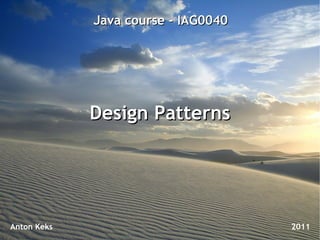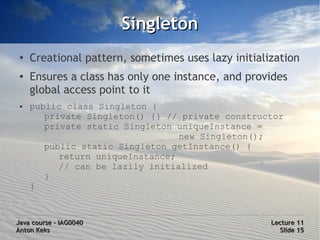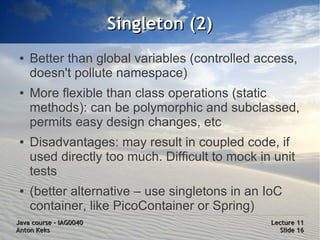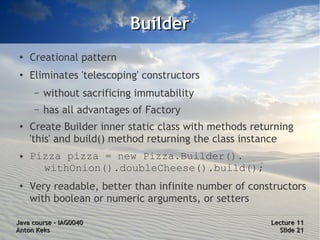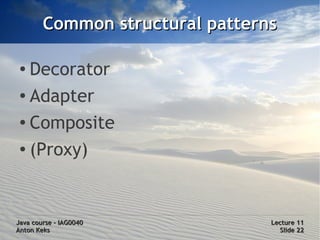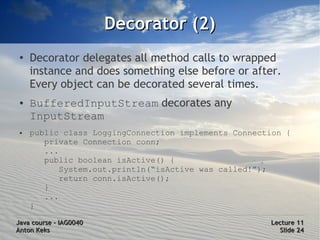The document discusses design patterns in software development, particularly within object-oriented programming (OOP), highlighting their importance in managing complexity and enhancing modularity and reusability. It categorizes design patterns into creational, structural, and behavioral types, while also addressing anti-patterns that should be avoided. Key patterns such as Singleton, Factory Method, and Observer are explained, along with their implications for software design and architecture.
